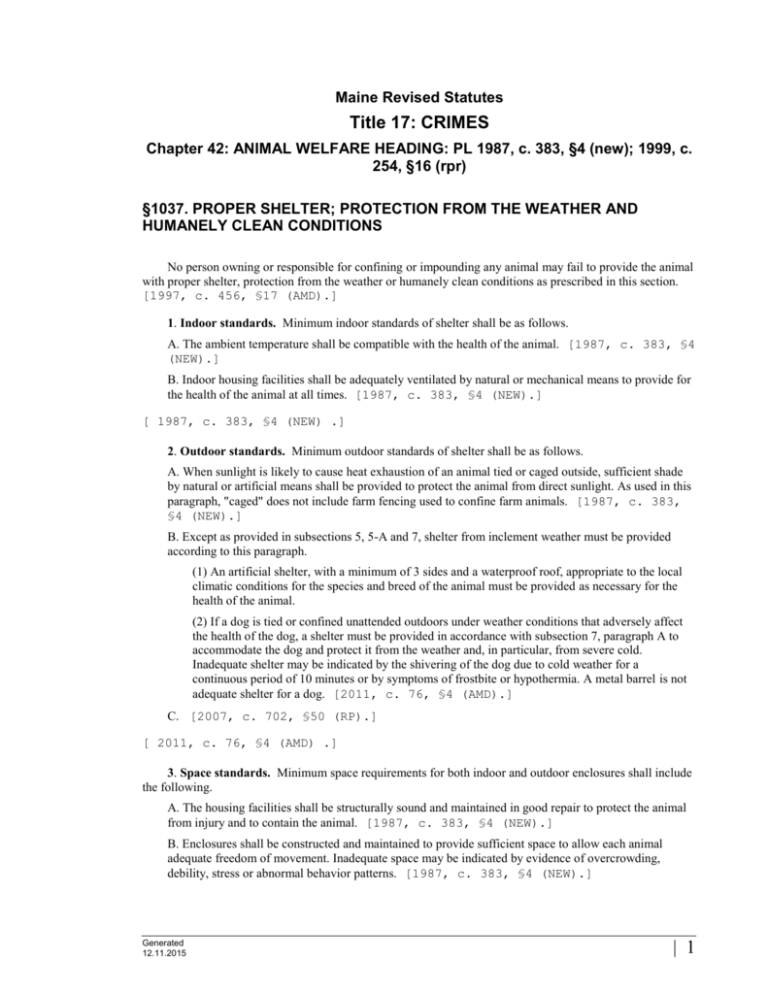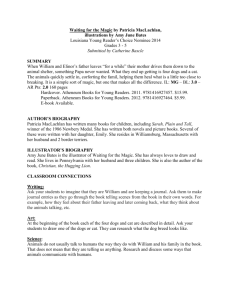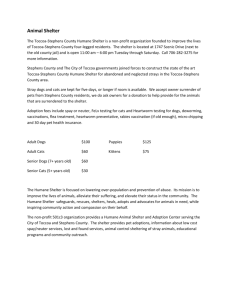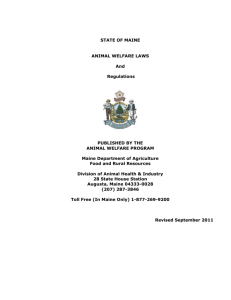Title 17: CRIMES - Maine Legislature
advertisement

Maine Revised Statutes Title 17: CRIMES Chapter 42: ANIMAL WELFARE HEADING: PL 1987, c. 383, §4 (new); 1999, c. 254, §16 (rpr) §1037. PROPER SHELTER; PROTECTION FROM THE WEATHER AND HUMANELY CLEAN CONDITIONS No person owning or responsible for confining or impounding any animal may fail to provide the animal with proper shelter, protection from the weather or humanely clean conditions as prescribed in this section. [1997, c. 456, §17 (AMD).] 1. Indoor standards. Minimum indoor standards of shelter shall be as follows. A. The ambient temperature shall be compatible with the health of the animal. [1987, c. 383, §4 (NEW).] B. Indoor housing facilities shall be adequately ventilated by natural or mechanical means to provide for the health of the animal at all times. [1987, c. 383, §4 (NEW).] [ 1987, c. 383, §4 (NEW) .] 2. Outdoor standards. Minimum outdoor standards of shelter shall be as follows. A. When sunlight is likely to cause heat exhaustion of an animal tied or caged outside, sufficient shade by natural or artificial means shall be provided to protect the animal from direct sunlight. As used in this paragraph, "caged" does not include farm fencing used to confine farm animals. [1987, c. 383, §4 (NEW).] B. Except as provided in subsections 5, 5-A and 7, shelter from inclement weather must be provided according to this paragraph. (1) An artificial shelter, with a minimum of 3 sides and a waterproof roof, appropriate to the local climatic conditions for the species and breed of the animal must be provided as necessary for the health of the animal. (2) If a dog is tied or confined unattended outdoors under weather conditions that adversely affect the health of the dog, a shelter must be provided in accordance with subsection 7, paragraph A to accommodate the dog and protect it from the weather and, in particular, from severe cold. Inadequate shelter may be indicated by the shivering of the dog due to cold weather for a continuous period of 10 minutes or by symptoms of frostbite or hypothermia. A metal barrel is not adequate shelter for a dog. [2011, c. 76, §4 (AMD).] C. [2007, c. 702, §50 (RP).] [ 2011, c. 76, §4 (AMD) .] 3. Space standards. Minimum space requirements for both indoor and outdoor enclosures shall include the following. A. The housing facilities shall be structurally sound and maintained in good repair to protect the animal from injury and to contain the animal. [1987, c. 383, §4 (NEW).] B. Enclosures shall be constructed and maintained to provide sufficient space to allow each animal adequate freedom of movement. Inadequate space may be indicated by evidence of overcrowding, debility, stress or abnormal behavior patterns. [1987, c. 383, §4 (NEW).] Generated 12.11.2015 | 1 MRS Title 17 §1037. PROPER SHELTER; PROTECTION FROM THE WEATHER AND HUMANELY CLEAN CONDITIONS [ 1987, c. 383, §4 (NEW) .] 4. Humanely clean conditions. Minimum standards of sanitation necessary to provide humanely clean conditions for both indoor and outdoor enclosures shall include periodic cleanings to remove excretions and other waste materials, dirt and trash to minimize health hazards. [ 1987, c. 383, §4 (NEW) .] 5. Livestock. Livestock must be provided with shelter suitable for the health of the animal. Except as provided in subsection 5-A, livestock must have access to a constructed or natural shelter that is large enough to accommodate all livestock comfortably at one time. The shelter should be well drained and protect the livestock from direct sun, rain, wind and other inclement weather. Notwithstanding this subsection, shelter for equines must be provided in accordance with subsection 2, paragraph B, subparagraph (1). For purposes of this subsection, "livestock" includes large game as defined in Title 7, section 1341, subsection 5 kept at a licensed commercial large game shooting area as defined in Title 7, section 1341, subsection 1. [ 2011, c. 76, §5 (AMD) .] 5-A. Livestock maintained under a rotational grazing system. Notwithstanding subsection 5, a person is not required to provide shelter for livestock while the animals are maintained under a rotational grazing system as long as the animals do not have injuries or infirmities that prevent them from accessing food and water and are in good body condition. For the purposes of this subsection, "rotational grazing system" means the practice of dividing up available pasture into multiple smaller areas during grazing season when pasture is available to meet the dietary requirements of the animals and subsequently moving the animals from one area to another after a number of days or weeks as determined by forage production and quality. [ 2011, c. 76, §6 (NEW) .] 6. Penalty. Failure to provide shelter in accordance with this section is a Class D crime. [ 1999, c. 254, §25 (NEW) .] 7. Dogs confined by tethering for long time periods. In addition to the requirements of subsection 2, paragraph B, subparagraph (2), when tethering is the primary means of confinement for a dog, the standards for shelter and tethering are as follows: A. A shelter must be provided that is fully enclosed except for a portal. The portal must be of a sufficient size to allow the dog unimpeded passage into and out of the structure. For dogs other than arctic breeds, the portal must be constructed with a baffle or other means of keeping wind and precipitation out of the interior. The shelter must be constructed of materials with a thermal resistance factor of 0.9 or greater and must contain clean bedding material sufficient to retain the dog's normal body heat; and [2009, c. 343, §26 (AMD).] B. The chain or tether must be attached to both the dog and the anchor using swivels or similar devices that prevent the chain or tether from becoming entangled or twisted. The chain or tether must be attached to a well-fitted collar or harness on the dog. For dogs other than dogs kept as sled dogs or dogs used in competition, the chain or tether must be at least 5 times the length of the dog measured from the tip of its nose to the base of its tail. For dogs kept as sled dogs or dogs used in competition, the chain or tether must be: (1) At least 2.5 times the length of the dog measured from the tip of its nose to the base of its tail if the anchor is stationary; or (2) At least 1.5 times the length of the dog measured from the tip of its nose to the base of its tail if the anchor is a pivot point allowing a 360` area of movement. [2009, c. 343, §26 (AMD).] | 2 Generated 12.11.2015 MRS Title 17 §1037. PROPER SHELTER; PROTECTION FROM THE WEATHER AND HUMANELY CLEAN CONDITIONS For the purposes of this subsection, "primary means of confinement" means the method used to confine a dog for periods of time that exceed 12 hours in a 24-hour period. For the purposes of this subsection, "arctic breeds" means Siberian Huskies, Alaskan Huskies, Alaskan Malamutes and other dogs with a double-layered coat and bred to live in an arctic climate and "dogs kept as sled dogs or dogs used in competition" means dogs regularly and consistently used in training or participation in competitive or recreational sled dog activities or other competition canine events. [ 2009, c. 343, §26 (AMD) .] SECTION HISTORY 1987, c. 383, §4 (NEW). 1997, c. 456, §§17-19 (AMD). 1999, c. 254, §25 (AMD). 1999, c. 765, §12 (AMD). 2005, c. 340, §§3,4 (AMD). 2007, c. 702, §§49, 50 (AMD). 2009, c. 343, §26 (AMD). 2011, c. 76, §§4-6 (AMD). The State of Maine claims a copyright in its codified statutes. If you intend to republish this material, we require that you include the following disclaimer in your publication: All copyrights and other rights to statutory text are reserved by the State of Maine. The text included in this publication reflects changes made through the First Regular Session of the 127th Maine Legislature and is current through October 15, 2015. The text is subject to change without notice. It is a version that has not been officially certified by the Secretary of State. Refer to the Maine Revised Statutes Annotated and supplements for certified text. The Office of the Revisor of Statutes also requests that you send us one copy of any statutory publication you may produce. Our goal is not to restrict publishing activity, but to keep track of who is publishing what, to identify any needless duplication and to preserve the State's copyright rights. PLEASE NOTE: The Revisor's Office cannot perform research for or provide legal advice or interpretation of Maine law to the public. If you need legal assistance, please contact a qualified attorney. Generated 12.11.2015 | 3






